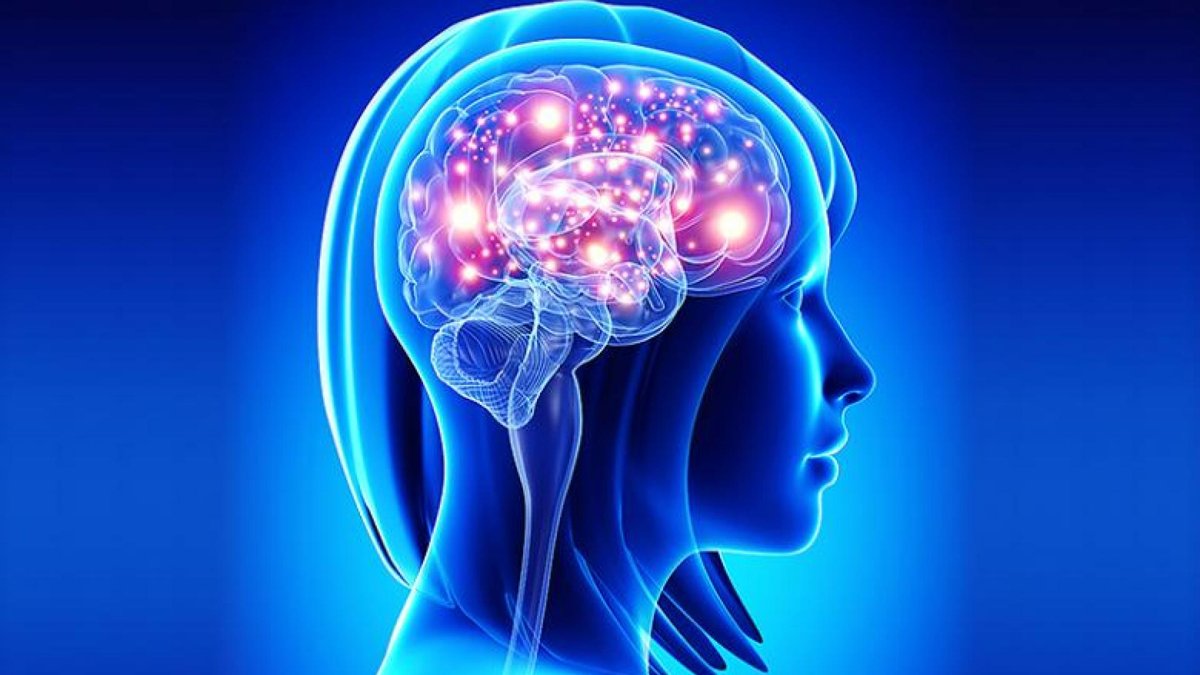
Explore the similarities and differences between Alzheimer’s and Parkinson’s disease, two common degenerative brain disorders.
Ron brings his 78-year-old wife, Sara, to the Memory Clinic, with a pressing concern. Sara is forgetting things more often, even though her Parkinson’s disease symptoms appear to be under good control with standard medications, a healthy diet, and plenty of physical activity. She is losing her train of thought mid-sentence, and she became very confused about where she was while driving the well-traveled route to her daughter’s home. Is she developing dementia? Is that a part of Parkinson’s disease? Or is she developing Alzheimer’s disease? And what are the differences between Alzheimer’s and Parkinson’s?
What is Dementia?
Dementia is a syndrome, not a specific disease. This means that the clinical features of dementia can result from any one of a large group of injuries, infections, or diseases. The symptoms of dementia can include one or more from a list that includes memory failure, diminished ability to keep multiple tasks in mind simultaneously and divide attention between them, problems with language comprehension or expression, trouble understanding spatial orientation, impaired executive function, and inaccurate decoding of others’ nonverbal cues.
What is Alzheimer’s Disease?
Alzheimer’s disease, the most common form of dementia among older adults, is an irreversible degeneration of the brain that causes disruptions in memory, cognition, personality, and other functions that eventually lead to death from complete brain failure. Genetic and environmental factors, including diet, activity, smoking, traumatic brain injury, diabetes, and other medical diseases, contribute to the risk of developing this form of the disease. The hallmarks of Alzheimer’s disease are the buildup of beta-amyloid plaques between brain nerve cells and tau neurofibrillary tangles, which are twisted fibers found inside the brain’s cells.
What is Parkinson’s Disease?
Parkinson’s disease was described by James Parkinson nearly 100 years before Dr. Alois Alzheimer described the dementia, later named Alzheimer’s disease. Called “shaking palsy” by Parkinson, this condition is diagnosed when a person shows at least two of these three symptoms: slowed movements (bradykinesia), muscle rigidity, and tremor (at rest). We recognize many other associated signs of Parkinson’s disease, including an expressionless face, quiet speech, cramped handwriting, shuffling gait, trouble getting out of a chair, and difficulty swallowing. Many of the symptoms of idiopathic Parkinson’s disease result when certain nerve cells that produce dopamine in the brain begin to malfunction and die.
Most cases are called “idiopathic,” meaning the cause remains unknown, although a small number of cases are linked with poisoning (certain pesticides, manganese, carbon monoxide), head trauma, more complex Parkinson’s disease-like neurological disorders (such as vascular parkinsonism, progressive supranuclear palsy, and multiple system atrophy), or reversible toxic medication effects (antipsychotics and some anti-vomiting medications).
At a Glance: Alzheimer’s vs. Parkinson’s
The table below summarizes the similarities and differences between Alzheimer’s and Parkinson’s.
Comparison of Alzheimer’s and Parkinson’s Disease
| Alzheimer's | Parkinson's | |
|---|---|---|
| Typical Age of Onset | After the mid-60s (late-onset form) | 50 - 65 (late-onset form) |
| Key Proteins Associated with the Disease | Beta-amyloid and tau | Alpha-synuclein |
| Movement and Coordination | Diminished coordination | Will display at least two of these three symptoms: muscle rigidity, slowed movements, or tremor |
| Disruptions in Memory, Cognition, Personality, and other Functions | Typically present | Often present |
| Memory | Difficulty learning new memories | Difficulty retrieving memories |
| Apathy and Depression | Common | Common |
| Psychotic Symptoms (delusions, paranoia, and hallucinations) | Can occur | Can occur both as part of the disease process or as a side effect of dopaminergic medications |
| Sleep Disorders | Sleep continuity is disrupted and fragmented early in the disease, resulting in naps during the day and wakeful episodes at night | REM behavior disorder (active bodily movements during dreams) is common Quality of sleep deteriorates in general |
Age of Onset
Most people with Alzheimer’s disease have the late-onset type—where symptoms first appear after the mid-60s. Parkinson’s disease presents earlier, typically between ages 50 and 65, with few cases beginning before age 40.
Parkinson’s is less common than Alzheimer’s, with around 1-2 cases per 1,000 people, but is still an important cause of neurological illness among older adults.
A small percentage of people with Alzheimer’s or Parkinson’s have “early-onset” disease. In Parkinson’s, symptoms can begin before age 50, and the early subtype is often inherited. For Alzheimer’s, the early-onset form begins before age 60. Many people with early-onset Alzheimer’s, although not all, have inherited specific disease-related genetic mistakes.
The symptoms of Alzheimer’s and Parkinson’s are caused by the destruction of brain cells. Unlike Alzheimer’s plaques and tangles, Parkinson’s brains show a loss of cells that produce a brain chemical called dopamine in a movement-related part of the brain (substantia nigra). Loss of these dopamine cells impairs communication needed for motor functions. The cells in the substantia nigra can be seen to include abnormal collections of a protein called “Lewy bodies.”
Cognitive Decline
Cognitive decline is common in both Alzheimer’s and Parkinson’s, though significantly less common in Parkinson’s. As many as half of people with Parkinson’s develop cognitive difficulties, which can range from mild forgetfulness to full-blown dementia. The dementia of Parkinson’s is called “subcortical” because of the location of affected brain areas. These dementias have somewhat different clinical symptoms than “cortical” dementia, like Alzheimer’s. In Parkinson’s dementia, slowed physical activity can be accompanied by slowed thinking and problems with memory that are more responsive to reminders than those of Alzheimer’s. They are more responsive because the difficulty is with memory retrieval rather than, as in Alzheimer’s, with the storage of new learning.
Behavioral Symptoms
Depression
Just like people with Alzheimer’s, those with Parkinson’s can also develop behavioral problems. Apathy is a common symptom in both diseases, along with depression. Sometimes, it’s difficult to tell these conditions apart, but it’s important to try because they are managed differently. Parkinson’s depression is often responsive to antidepressant treatment, maybe more than Alzheimer’s. The opportunity for symptom-reducing treatment of Parkinson’s should not be overlooked.
Anxiety
Anxiety is common in both Parkinson’s and Alzheimer’s and may require behavioral treatment, lowering of respective medications, or the addition of antidepressant or antianxiety medications. Keep in mind that both conditions leave patients vulnerable to medication side effects.
Psychotic Symptoms
Psychotic symptoms such as delusions and hallucinations can occur in both Alzheimer’s and Parkinson’s. In both disorders, these symptoms may indicate delirium caused by infection or other medical conditions. In people with Parkinson’s, an additional risk for psychotic symptoms is added by the medications that treat movement disorder symptoms. At higher doses, these otherwise helpful medications can induce hallucinations and paranoid ideas.
Sleep Disturbances
Finally, the quality of sleep deteriorates in both Alzheimer’s and Parkinson’s. People with Alzheimer’s often have fragmented sleep. Those with Parkinson’s experience a different problem called REM (rapid eye movement) behavior disorder, in which physical activity occurs during the normally motionless period of REM sleep. REM behavior disorder can respond to treatment with Klonopin, a medication that would usually be avoided in Alzheimer’s because of concern about its effects on memory and alertness.
Lewy Body Dementia
Some older adults develop movement symptoms similar to those of Parkinson’s after, or only shortly before, developing cognitive difficulties that look like Alzheimer’s. This combination of movement and cognitive changes is characteristic of the second most common form of dementia: Lewy body dementia.
As its name suggests, this is a condition in which cognitive decline is very prominent, sometimes more so than movement symptoms, yet the microscopic brain findings are similar to Parkinson’s.
Whether Lewy body is truly a different condition than Parkinson’s with dementia or a variant of the same disorder remains a topic under debate. Although, the finding of increased beta-amyloid plaques in brains with Lewy bodies has suggested a difference between these conditions. Lewy body symptoms can include dramatic fluctuations in cognitive functioning, falls, and psychotic symptoms. Like patients with Parkinson’s, and even more than patients with Alzheimer’s, standard antipsychotic treatment is often complicated by severe toxic reactions. The cognitive enhancers used in Alzheimer’s, however, can play a useful role in treating Lewy body.
Summary
Distinguishing between Alzheimer’s and Parkinson’s is important to determine the best treatment approach. Medications suitable for one of these conditions, for example, might create problems when given to a patient with the other condition. Sara’s further testing identified mild cognitive impairment symptoms that are probably related to her Parkinson’s but exacerbated by one of the medications she has been taking. Her mental clarity improved a little with the adjustment of that medication. Although Parkinson’s-related cognitive changes could get worse over time, there is no sign that she is developing Alzheimer’s, and at this point, there is no diagnosis of dementia.
About BrightFocus Foundation
BrightFocus Foundation is a premier global nonprofit funder of research to defeat Alzheimer’s, macular degeneration, and glaucoma. Since its inception more than 50 years ago, BrightFocus and its flagship research programs—Alzheimer’s Disease Research, Macular Degeneration Research, and National Glaucoma Research—has awarded more than $300 million in research grants to scientists around the world, catalyzing thousands of scientific breakthroughs, life-enhancing treatments, and diagnostic tools. We also share the latest research findings, expert information, and resources to empower the millions impacted by these devastating diseases. Learn more at brightfocus.org.
Disclaimer: The information provided here is a public service of BrightFocus Foundation and is not intended to constitute medical advice. Please consult your physician for personalized medical, dietary, and/or exercise advice. Any medications or supplements should only be taken under medical supervision. BrightFocus Foundation does not endorse any medical products or therapies.
- Disease Biology








